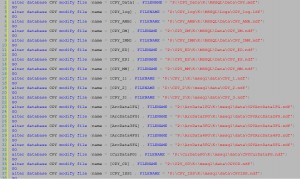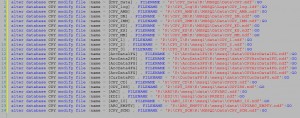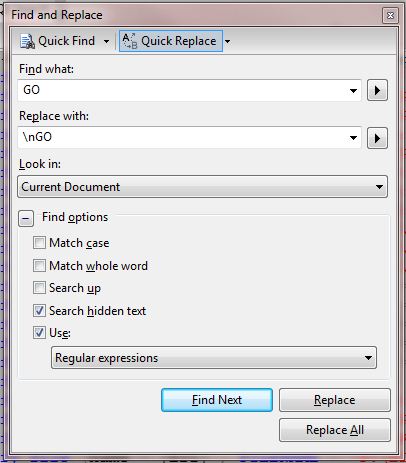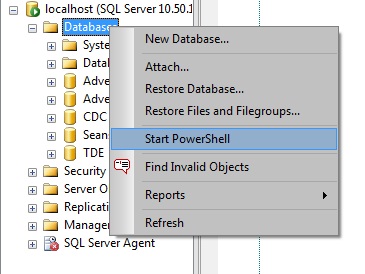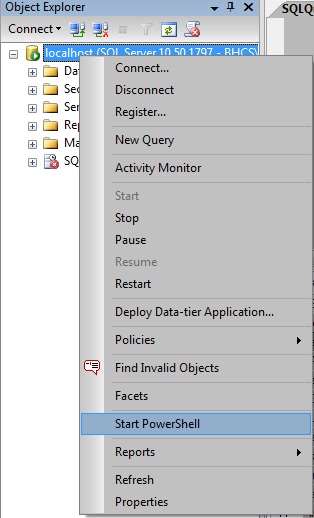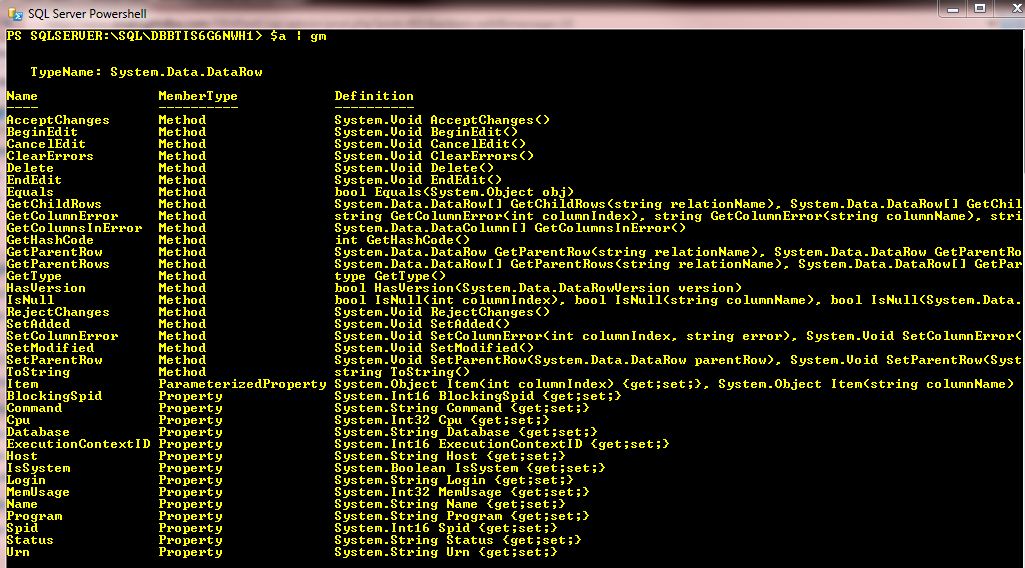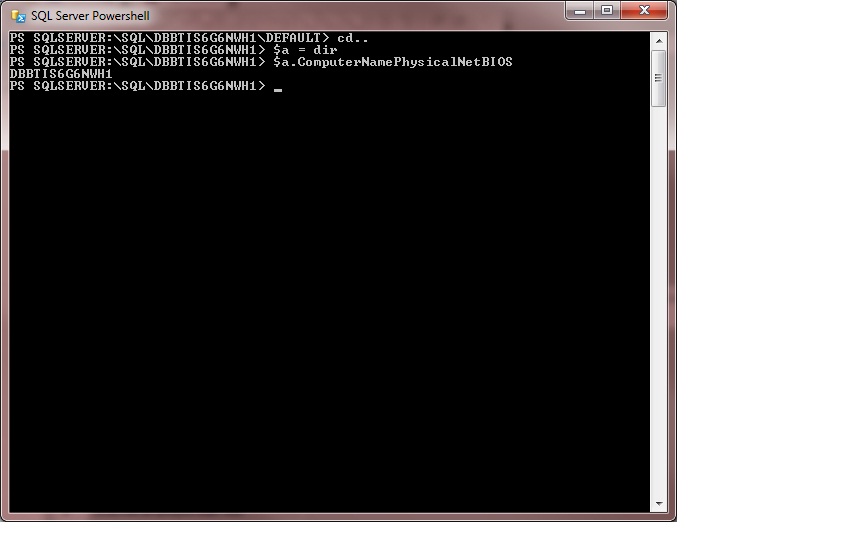Ok, I got some answers from the PS homework, so now it’s time for my solutions. If you didn’t get a chance to look at the assignments, take a look at them here real quick if you like and test yourself:
http://www.midnightdba.com/DBARant/?p=647
As with anything there can be multiple solutions to each problem, and while I may not give every single version of a solution, I’ll cover the major ones as I think of them. At times I’m also going to expand on the solution and show you a complete script you can use in your environment.
1. Get the total size of all the DBs on a server.
Method 1:
DIR | %{ $Total += $_.Size };
$Total
This is a basic method which doesn’t really require much explanation, but if you would like a full discussion of it, you can go here: http://www.midnightdba.com/DBARant/?p=488
Method 2:
DIR | measure -property Size -sum
Again, there’s not much to say about this.
However, as a bonus, here’s a lovely script that will give you some good size info on your DBs, and then give you the sums at the bottom.
param($ServerName = "localhost")
$ServerName
cd SQLSERVER:\SQL\$ServerName\DEFAULT\Databases;
$a = dir;
$Size = @{Label="Size(MB)"; expression={"{0:N2}" -f ($_.Size)}};
$DataSpaceUsage = @{Label="DataSpaceUsage(MB)"; expression={"{0:N2}" -f ($_.DataSpaceUsage/1024)}};
$IndexSpaceUsage = @{Label="IndexSpaceUsage(MB)"; expression={"{0:N2}" -f ($_.IndexSpaceUsage/1024)}};
$TotalSpaceUsage = @{Label="TotalSpaceUsage(MB)"; expression={"{0:N0}" -f (($_.DataSpaceUsage + $_.IndexSpaceUsage)/1024)}};
$SpaceAvailable = @{Label="SpaceAvailable(MB)"; expression={"{0:N2}" -f ($_.SpaceAvailable/1024)}};
$a | FT Name, $Size, $DataSpaceUsage, $IndexSpaceUsage, $TotalSpaceUsage, $SpaceAvailable -auto
#### Now get the total and put it into diff measures.
$Total = ($a | measure -property size -sum)
# $a | %{$Total += $_.size}
$TotalInMB = @{Label="Total(MB)"; expression={"{0:N2}" -f ($_.sum)}};
$TotalInGB = @{Label="Total(GB)"; expression={"{0:N2}" -f ($_.sum/1024)}};
$TotalInTB = @{Label="Total(GB)"; expression={"{0:N2}" -f ($_.sum/1024/1024)}};
$Total | FT $TotalInMB, $TotalInGB, $TotalInTB
CD C:\
DIR | %{ $Total += $_.Size };
$Total
2. Cycle through a list of servers and get the service account that all the SQL services are set to start with.
$Servers = "Server1", "Server2", "Server3"
$Servers | %{
$curServer = $_ ## Current server in the loop.
gwmi win32_service -ComputerName $_ | ?{$_.DisplayName -match "SQL"}
} | Format-Table SystemName, DisplayName, StartName -auto
This is one of those that has a few subtle nuance versions, but there’s no need for me to go into each one.
However, here’s my original post on the topic.
http://www.midnightdba.com/DBARant/?p=386
3. Script all the SPs in a DB to a txt file. Make sure they’re separated by GO stmts or the script won’t run.
dir | %{$_.Script() | out-file c:\SP.txt -append; "GO" | out-file c:\SP.txt -append; $_.Name;}
There are a few ways to do this one as well, but again they’re just nuances. And when I say a few ways, I’m really only referring to the proper way to do it in PS, and not the overly complicated SMO versions. While you can definitely script this in SMO, it’s so long I don’t even consider it a solution in comparison to these 1-liners.
As well, I’ve got 2 vids that explain the topic in full. Here’s what you need to know:
http://midnightdba.itbookworm.com/VidPages/PowershellScriptDBObjects/PowershellScriptDBObjects.aspx
http://midnightdba.itbookworm.com/VidPages/PowershellScriptDBObjectsWithOptions/PowershellScriptDBObjectsWithOptions.aspx
4. Change the default file location for a group of servers.
$a = dir
$a.settings.DefaultFile = "C:\MyNewFiles"
Ok, while I haven’t officially blogged on this one, there are 2 similar blogs that show you how to get to the level you need to be in order to run this one. So follow those other ones, and you’ll know how to do this one.
http://www.midnightdba.com/DBARant/?p=589
http://www.midnightdba.com/DBARant/?p=601
There’s also my video that shows you how to do this and I think it’s more comprehensive.
http://midnightdba.itbookworm.com/VidPages/PowershellServerProps/PowershellServerProps.aspx
5. Cycle through all the jobs on a server and change all their owners to sa.
dir | %{$_.OwnerLoginName = "sa"; $_.Alter(); $_.Name;}
Now, there’s not a lot of explanation here. That’s because I’ve got a vid that explains it all.
http://midnightdba.itbookworm.com/VidPages/PowershellChangingJobOwners/PowershellChangingJobOwners.aspx
Ok, that’s it for the first PS homework assignments. You’ll notice that I assumed you knew where to run these from. I can’t very well teach every single basic every single time. However, I tried to give you resources to find the answers.
